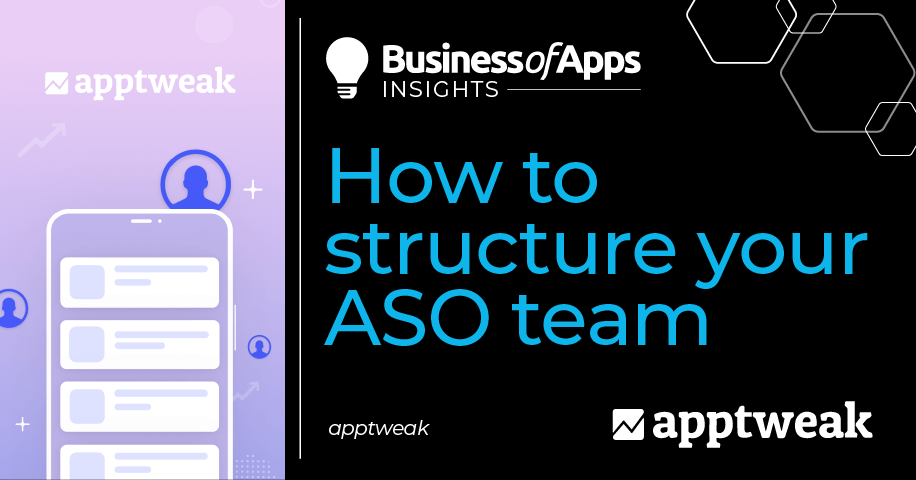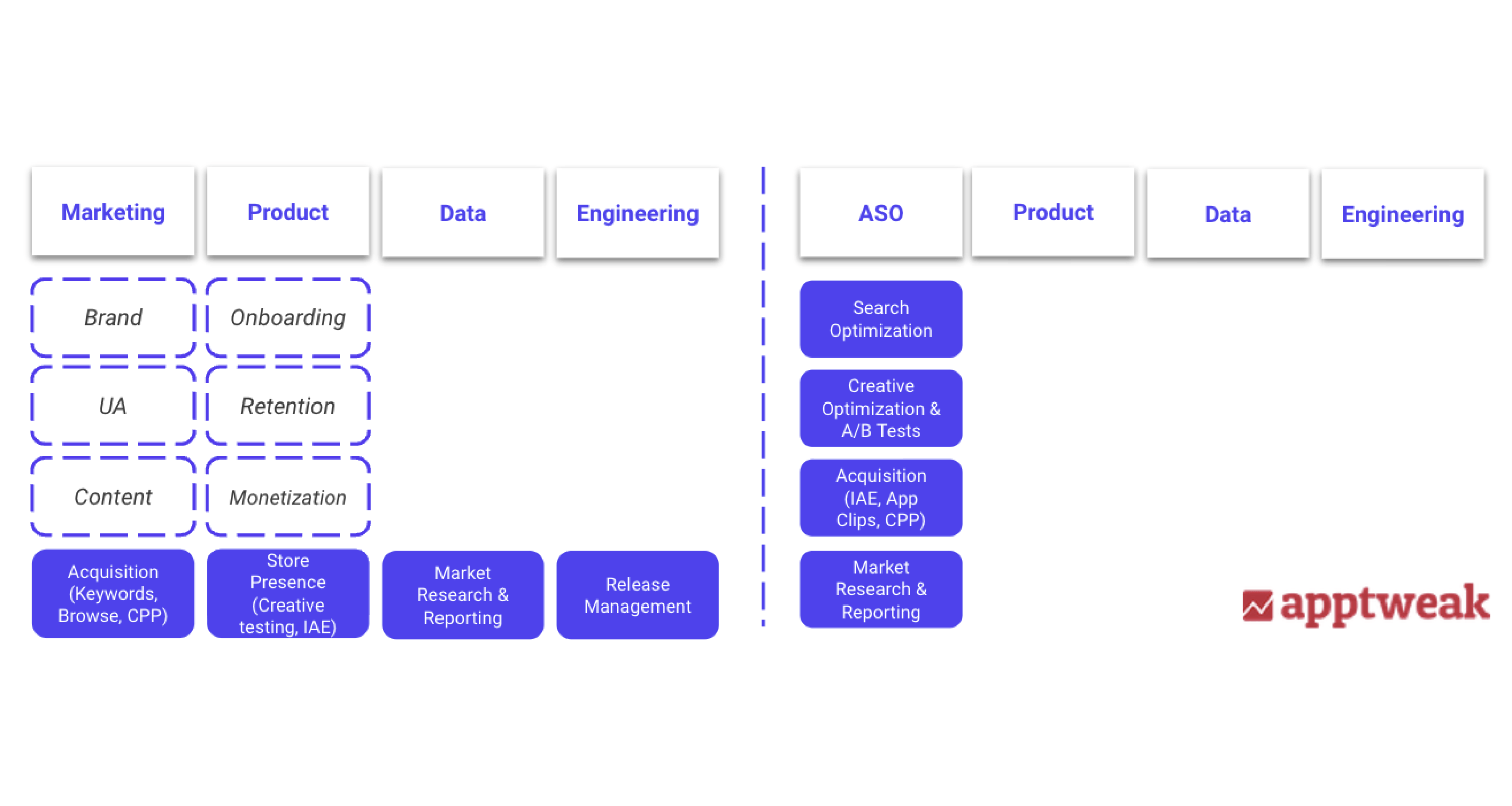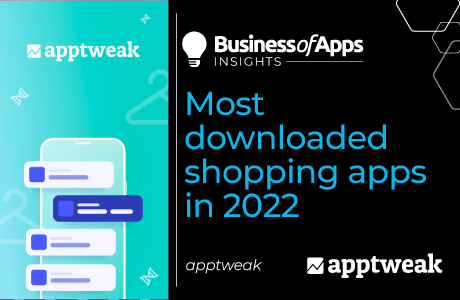The demand for mobile apps is ever so high. With the increasing number of apps in the app stores, competition on the stores is getting fiercer than ever. The increasing cost of advertising only makes it harder to continue to attract new users. That’s when people started to look more into App Store Optimization (ASO), which became an integral part of user acquisition.
In the past few years, there’s been a steady demand for ASO positions in companies publishing multiple apps. This interest gained further impetus after the latest release of Apple’s App Tracking Transparency (ATT) and iOS 15.
This article was first published on apptweak.com.
Many app developers have now begun to reconsider their user acquisition (UA) strategies, switching from paid advertising tactics (such as social media and other approaches based on digital identifiers) to more organic approaches that make the best use of app store marketing tools and organic acquisition. In the face of such swift changes, most app companies today are confronted with the challenge of creating an ASO team that meets their specific needs and can help achieve growth.
Redefining App Store Optimization in 2022
The definition of “ASO” has changed in 2022. It goes beyond more than just optimizing keywords and screenshots. It is thus important to rethink where ASO fits within your organization and structure your team accordingly. This year has witnessed major events on both the app stores that redefine ASO:
- With the introduction of iOS 15 in-app events and LiveOps on Google Play, app stores have become places for developers to promote specific content to new, active, and/or lapsed customers. Therefore, ASO has shifted its sole focus on new user acquisition to a wider scope encompassing engagement and retargeting.
- At the same time, the launch of iOS 15’s custom product pages underlines a significant improvement from the earlier “one app store page for all” to now tailored product pages for different users, further blurring the lines between ASO and UA.
Besides, other topics like user review management (e.g. how to encourage users to leave positive reviews) or alternative discovery techniques such as iOS App Clips have evidently expanded the scope of App Store Optimization to include functions that often lie within other departments, such as marketing, data, or product.
How to structure your ASO team: Cross-functional vs. independent
Companies planning on optimizing their ASO potential should think about incorporating ASO in their growth plans and thereby set up a structure to better manage it. Here, we talk about two different structures to help you define your choice – cross-functional and independent.
ASO team structure – cross-functional vs. independent
Source: AppTweak
Cross-functional ASO structure in each department
In this kind of structure, the many facets of ASO are within the responsibilities of different departments. The marketing team is responsible for organic and paid user acquisition, the product team coordinates app releases and executes initiatives to promote user engagement such as in-app events, while the design team creates and localizes creatives.
Benefits:
- Lays out clear missions with well-defined KPIs (e.g. user acquisition measured by downloads, or user engagement measured by retention).
- The close involvement of the product team provides opportunities to create a better alignment between the app page and in-app experience.
Challenges:
- Projects move at a slower pace when many different people or departments are involved.
- Out-of-the box initiatives might be beyond the ASO scope of each pod and leave opportunities for growth on the table.
An independent team dedicated to ASO
This structure represents a full team completely responsible for all things ASO, and who would own all projects related to the app stores. Such a team would function independently of the other departments with employees coming from varied backgrounds and experiences, each bringing their prowess to ASO projects.
Benefits:
- Consolidating responsibilities in one team allows for stronger collaboration and speedier implementation of projects.
- Clear ownership allows for more experimentation with new app store features and changes.
Challenges:
- To find the right people with a varied skillset to manage all things ASO.
- Smaller, more agile ASO teams might clash with established product teams that manage a tight release schedule (e.g. ASO teams will have to wait for the product release schedule to execute their plans and update app store pages).
What skills do you need in an ASO team
When your company adopts a particular structure, it has an impact on the profiles you choose to head your ASO projects. Your requirements depend not just on your company-wide strategy, but also whether you want to keep one or more people at the helm of ASO or train multiple employees across the company in specific ASO-related tasks. Therefore, what is more essential is to look for people with definite skills and not necessarily with specific experiences.
Let’s take a look at the skillset common within strong ASO teams:
Data mining and analysis
One essential skill encompassing all areas of ASO is data analysis. It helps identify and define the data points to inform your ASO strategy. ASO managers will have to determine where to extract certain data from and understand the measurement methods of store consoles and third-party tools. ASO teams are usually also tasked with reporting on app store performance, hence strong analytical skills are a must.
Marketing and design
ASO teams need strong marketing skills. A good understanding of keyword research and design principles are the foundations of ASO. Strong communication skills and copywriting are necessary to craft the right product page that persuades users to download. Proficiency in Apple Search Ads and Google App Campaigns is a big plus.
Product and engineering
When the focus of your ASO strategy turns more towards retention and referral matters, it is good to have someone experienced in product management or engineering to quickly resolve issues with Android vitals, establish priorities among user review topics, perform a user review prompt at the right moment in the customer journey, or test App Clips as a new acquisition procedure.
Expand your ASO value with ASO strategists
Finally, don’t hesitate to prepare for change while building an ASO team. Indeed, not each OS update is going to impact ASO significantly, but we cannot ignore the frequent introduction of advanced features on both Google Play and the App Store in recent years.
App publishers should thus consider taking on ASO strategists within their company, who can then give precedence to the ASO projects that are the most crucial to the organization’s specific needs. These individuals can also help acquaint different parts of the company with new and lesser known store processes, thus expanding opportunities.
In other words, an ASO strategist should be responsible for advancing ASO as a resource for other components of the enterprise, such as market and user research. It could help broaden the scope of ASO beyond direct store optimization by making use of ASO data to inform growth strategies. For example, by analyzing trends in the app stores and among competitors, ASO strategists can be the first ones to discover new markets to expand into or new trends to incorporate within the app or game.
Conclusion
Organizations need to be educated about the complexity of ASO and the variety of opportunities it can provide, now more than ever. Companies need to build ASO teams that draw on a variety of skills and can be organized as a subset of growth, where ownership is clear (whether centralized or distributed).
Every ASO team needs a strong ASO tool. AppTweak’s leading ASO tool fuels growth for apps and games and helps mobile leaders increase their organic installs and boost app performance.












